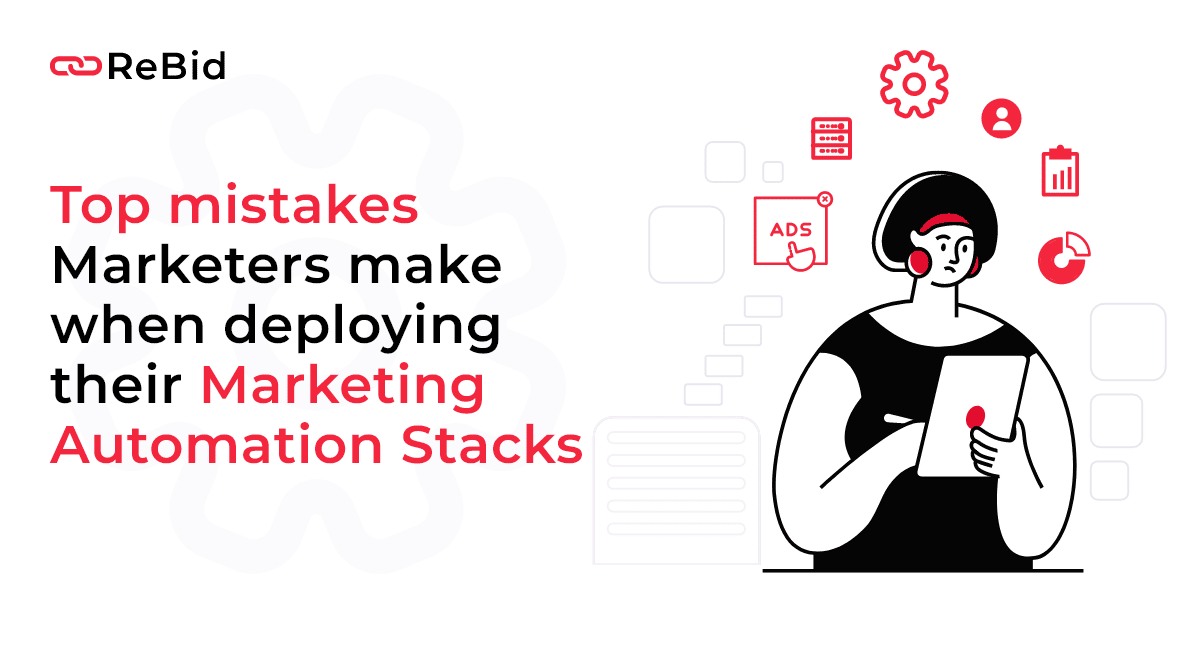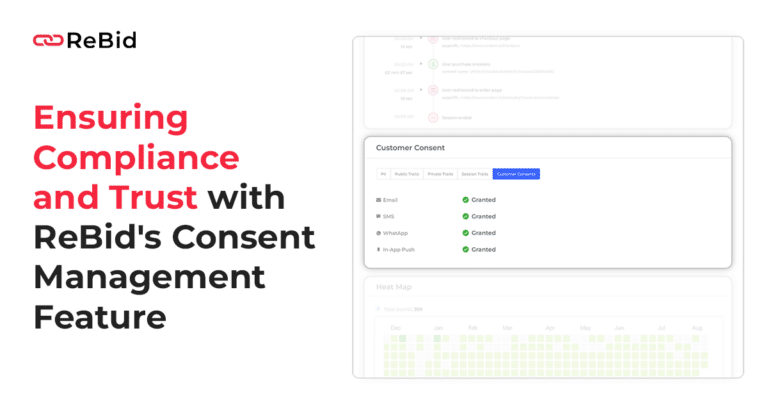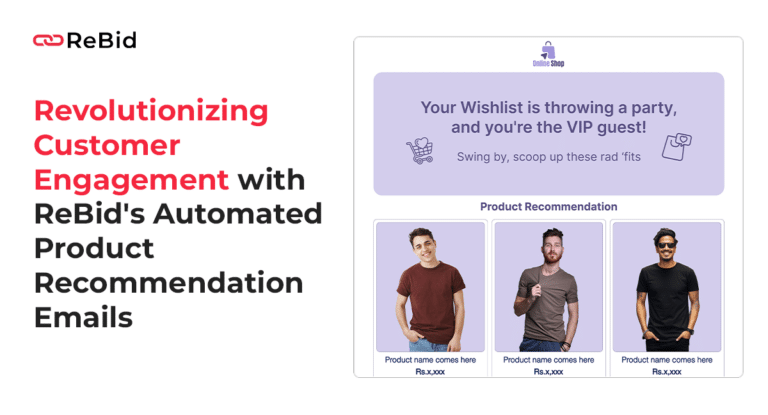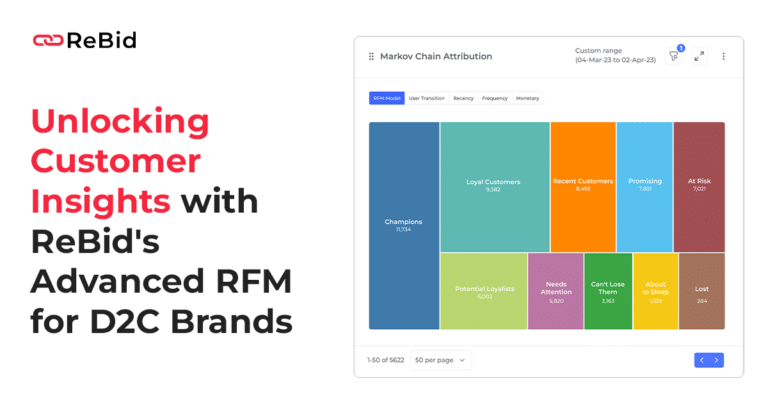Your conversion funnel is in place. Your creatives and messaging are set. And your website is rocking. You have the right team, relevant data, and appropriate reporting tools. Everything’s in place, including your marketing automation stack.
But before you get started with your campaign, pause and think again. It’s not uncommon for marketers to make mistakes when deploying their marketing automation stacks. There are some common pitfalls along the way for most marketing teams.
You do not have to take the long route to learn from these marketing automation mistakes. . This blog post looks at the top errors and offers solutions to prevent them.
But first, let’s understand a little more about marketing automation stacks.
What is a marketing automation stack?
A marketing automation stack is a collection of software and services that work together to help you maximize the performance of digital advertising campaigns. The marketing automation stack impacts three essential areas: marketing automation, technology, and data.
Marketing automation allows you to manage your customer database, while the technology element enables you to track how your ads perform. Data helps you understand how your audience interacts with your brand.
Platforms like ReBid empower marketing functions to manage all advertising and marketing activities from a single, unified dashboard where your automation, data, and technology merge. You no longer need to switch between multiple tools for simple tasks like customer segmentation, campaign measurement and reporting, or creative optimization.
There are different categories of marketing automation tools, but they usually fall into these three groups: planning, execution, and reporting.
- A planning tool helps you plan your campaigns and assign budgets for each. ReBid Buy, for example, is a unified solution for automated programmatic media buying and planning.
- Execution tools allow you to activate your campaigns after you plan them. With ReBid Buy and ReBid Insights, you can launch all types of advertising and marketing campaigns and auto-optimize them on the back of intelligent recommendations provided by AI.
- And finally, reporting tools allow you to see how well your campaigns performed after they’ve run. ReBid Buy provides the reports of your choice that you can share with C-suite folks.
Make your marketing function more efficient and accountable. Request a demo for ReBid Insights today
Top marketing automation stack mistakes and how to avoid them
Let’s see some probable mistakes you could be making as you deploy marketing automation. We also cover solutions to overcome your marketing automation mistakes.
- Investing in too many tools
The marketing automation space is overwhelming. At last count by Chiefmartec, there were almost 10,000 martech tools out there, most of which focus on marketing automation. When you get started with your marketing automation investment planning, it can be tempting to purchase everything available. But remember: you don’t need all of them.
The best way to determine which tools are right for your business is to think about your marketing and revenue goals, specific automation use cases, what data you have and what you need to collect. Then, evaluate the tools that will help you accomplish your unique goals and use cases.
Your best bet is to start with a few core tools and add new ones over time as you see fit. You could also consider an all-in-one solution instead of investing in a piecemeal approach.. That way, you’ll be able to focus on what matters most: ROI.
- Not having realistic expectations
Marketing automation tools are powerful, but they are not magic. If you’re using your marketing automation stack to achieve something that it was never meant to do or expect it to overhaul your campaign effectiveness overnight, you will run into problems.
When choosing a marketing automation tool, ensure what you expect it to do for you is realistic and well within its capabilities. Matching your use cases and needs with the tools available in the market is the best way to go about making the right choices.
- Lack of clear taxonomy rules
Taxonomy is the classification system for your marketing automation stack. It includes naming the actions that users take and structuring them with the help of values. The value for each user gets recorded as metrics and dimensions.
If you have a marketing automation stack with wide-ranging tools, getting stuck with taxonomy is common. It is thus vital to have a unified system of naming the user actions.
A well-defined naming convention has several benefits. You can enable seamless data analysis and ensure new team members do not get confused with the taxonomy.
Another thing to keep in mind is having a clear naming structure before getting started with your campaigns. This step can be easy to forget, especially when you are too excited about launching your marketing automation stack.
- Ignoring tag managers
You can use a tag manager to deploy marketing tags like code snippets on your website and manage them later. The tag manager interface is the focal point that you can use to deploy and manage tags. There is no need to work on codes or access your website backend each time. You can thus deploy new tools in your marketing automation stack without the help of your developers.
The problem starts when you use the back end for hardcoding marketing snippets. When you have multiple integrations, this problem will quickly snowball into a bigger issue and become difficult to manage.
Another area tag managers are good at is publishing changes. A tag manager will allow you to eliminate the need to contact the developer every time you want to publish changes to your website.
- Ignoring a customer data platform
Marketing automation is so much more than a tool that shoots well-written emails on cue. Your stack is incomplete with a CDP.
A customer data platform (CDP) lets you collect and consolidate critical insights across all your customer interactions, including call center and ecommerce store, digital ads, store visits, among others.. You can use this data to create better customer experiences and get more out of every interaction.
A CDP also acts as a single source of truth for all your customers, allowing you to collect, activate, and analyze the right data at the right time. This helps you make better decisions in terms of customer churn and loyalty and intervene before you lose them to a competitor. Insights from a CDP also enable you to hyper-personalize every customer touchpoint, build deeper relationships, upsell and cross-sell, and earn customer loyalty – all of this while growing your revenue.
Let’s say you are a fashion retailer. A good CDP will be able to help you understand your customer’s immediate needs or overall lifestyles. For example, if it shows that a customer is a regular gym-goer, you can target them with fitness wear ads and communication. If they recently purchased swimwear from you, they could soon be in the market for more holiday outfits. These insights can help you keep your customers returning and improve key metrics like average order value and customer lifetime value.
A CDP is marketing automation’s biggest contribution in terms of consumer insight and hyper-accurate targeting and personalization. Don’t miss out on it.
- Not consolidating your stack for transparency and visibility
You will struggle with the impact of marketing automation if you don’t have visibility and consolidation across your stack.. You might see duplication of data or even efforts, leading to deep inefficiencies in your system.
Make sure your marketing automation stack focuses on de-duplication, dashboards all activities, and provides a repository for all your marketing-related data, actions, creatives etc. This will improve the efficiency and accountability of your marketing function.
- Having data silos
Siloed data is one the biggest barriers in making holistic marketing decisions, beating the very purpose of marketing automation. With over 85% of customers demanding cohesive interactions and experiences across departments, not breaking data silos is equivalent to leaving money on the table.
Make sure your marketing automation stack is set up to consolidate all your data for a single customer view. Many tools leverage data pipelines to be able to break data silos.
Bottom line
When you first work with a marketing automation stack, it is easy to get caught up in the excitement of having all these tools at your fingertips. Mistakes, too, are common. What’s crucial is to build a solid foundation for your marketing automation stack instead of getting straight to the implementation phase.
However, this process will not be so complex with the right marketing automation stack partner. ReBid was built to improve the efficiency and impact of your marketing automation investments. Our team comes with seasoned expertise to help you get onboard with automation – friction-free and without errors. We think of the technology and data needs on your behalf. All you need is to bring in the strategy. Leave the rest to us.





